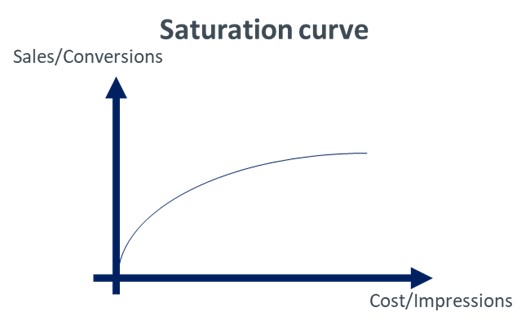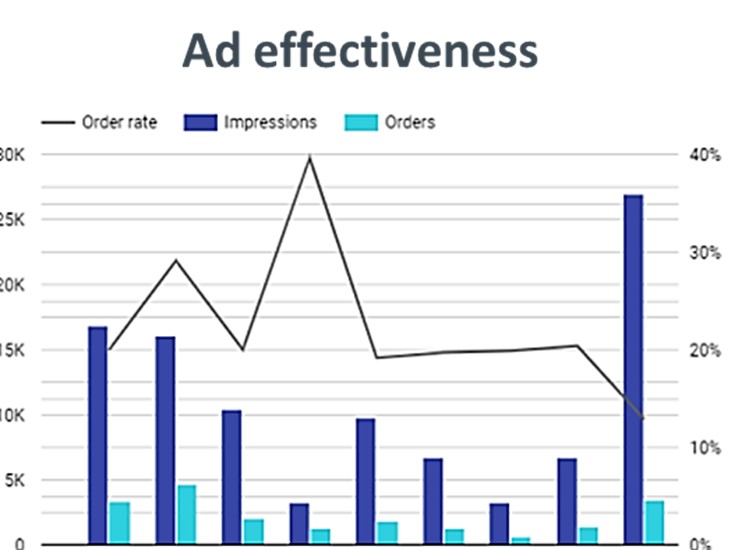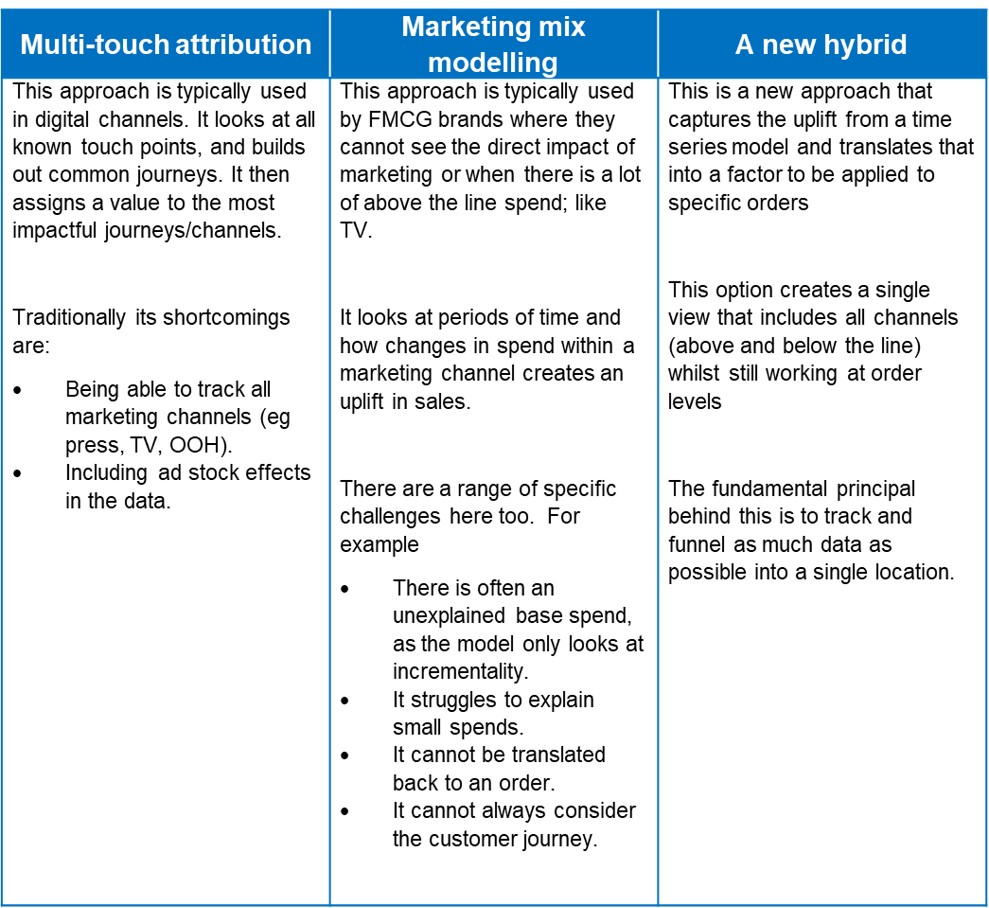 There are many ways in which digital advertising can have an impact on someone’s propensity to buy from your business.
There are many ways in which digital advertising can have an impact on someone’s propensity to buy from your business.
So when it comes to reviewing customer attribution performance in relation to marketing spend, approaches vary depending on the channel used, external factors such as buyer behaviour and seasonality, and other elements of the marketing mix such as price.
Digital advertising typically involves utilising an online ad platform, which could be a social media site like Facebook or a publisher like Time Inc or the Daily Mail. The platform will serve up impressions of your ad’s content.
The content typically:
- Directs people to a website to make a purchase; this is typically tracked through a sales conversion tool.
- Is designed to increase brand awareness and engagement; this is typically tracked through surveys.
Sounds simple enough we know, however tracking tools in Google Analytics and Facebook can create conflicts which mean you don’t get an accurate picture. In this article we explain why.
Firstly, it is important to note that some platforms like Facebook are what we call “closed networks”. This is because they do not allow third party tracking pixels, which would enable cross-checks and analysis to other relevant data in your systems. In contrast, open networks give that freedom; however, you need to agree access with the advertising platform concerned.
A solid foundation – basic data checks
Many approaches can be used to attribute spend or measure consumer engagement, however it is important to have data set up correctly in the first place.
For example:
- Checking the impressions pixel of the advertising platform is set up to help you track impressions and conversion – either via their site or importing it into your own.
- All ads should have appropriate UTM parameters to track click-throughs accurately. UTMs are short text codes that you add to URLs (or links) to help you track the performance of webpage or campaign. The UTM should be clear and enable you to reconcile clicks from the campaign with your web analytics tool.
- To see the full picture beyond the click from the ad, your analytics tool should also match the click against a sale and conversions in your e-commerce/customer database.
In essence, your paid ad’s conversion should match your website/e-commerce site’s tracking.
4 common measurement points for digital ads
Typically, there are 4 common measurement points when it comes to tracking the impact of digital ads on attribution. These are:
- Spend efficiency of impressions vs engagement – ie are people engaging with the ads and clicking on them?
- Indirect ad conversion – ie people are responding to the ad, but via a different online session
- Indirect long-term impact of the ad – ie people see the ad but are more likely to buy later in-store
- Attribution of all marketing engagement on sales – ie considering all the other channels’ activity the consumer has been party to
Measure 1 is typically aided mainly by the data coming from the ad platform. Measures 2, 3 and 4 will also need to factor in data from your organisation’s platform(s) – your website/ecommerce store, physical store (instore purchase).
Addressing common challenges for each measure
 With measure 1, Google Analytics can only show you the engagement as ‘clicks’. Also, as you spend more on a channel, you start to get diminishing returns. Given that the ad platforms tend to work on totals or aggregated results this can be hidden.
With measure 1, Google Analytics can only show you the engagement as ‘clicks’. Also, as you spend more on a channel, you start to get diminishing returns. Given that the ad platforms tend to work on totals or aggregated results this can be hidden.
Saturation curves can, however, be identified by using summarised data from the ad platform and can be flagged through a series of time-based tests or by breaking down ad groups.
 With closed networks like Facebook you may have to use their aggregated data. For more open networks which let you deploy your own tracking tags, you can achieve more advanced reporting.
With closed networks like Facebook you may have to use their aggregated data. For more open networks which let you deploy your own tracking tags, you can achieve more advanced reporting.
For example, our WebFusion tool tracks ad effectiveness by cross-checking multiple attributes like, source/medium, format, number of impressions of an ad. From this a conversion rate for that metric is calculated.
Ad effectiveness helps you to see all the customer’s exposures to your ads and conversions in once place. We can also use surveys to show the impact on other metrics like brand awareness
With measures 2 and 3 either your own pixel tracking solution on the ad platform or the ad platforms pixel on your site is needed to track conversions.
A typical example of this is the Facebook pixel, however it can only ever give you a GROSS conversion rate (i.e. it does not consider other channels/activity) hence your own pixel is better. Google Analytics won’t include your indirect traffic either as it is limited to only the last click in its reporting.
As a supplement to help you get a more holistic picture of indirect ad conversion, surveys and incremental modelling techniques can be used. A broader focused attribution tracking system like WebFusion can integrate multiple platforms to deliver these insights.
Measure 4 is the holy grail for many marketers and therefore the most elusive. That’s not to say it’s impossible to achieve. Tools can capture the customer journey to assess the impact of different marketing activities on attribution. For example:

Summary
There are many ways in which digital advertising can have an impact on someone’s propensity to buy. Similarly there are many ways to attribute spend or measure results from your campaigns, however you want those results to reflect the true picture and factor in all the variables at play. This means filling in data gaps and having the right data in the right attribution model to gain accurate and helpful insights.
Tools like WebFusion can fill in the gaps accurately, integrate with offline data sources, and show you your full customer journey. This can help you get smarter about how you deploy your digital ad spend. So, if you are experiencing these common dilemmas…
- You can’t see the whole journey in your Google Analytics
- You can’t determine if your facebook ads are also appearing to existing customers rather than just prospects
- You can’t make sense of your current reporting
… then do get in touch for an initial chat.

